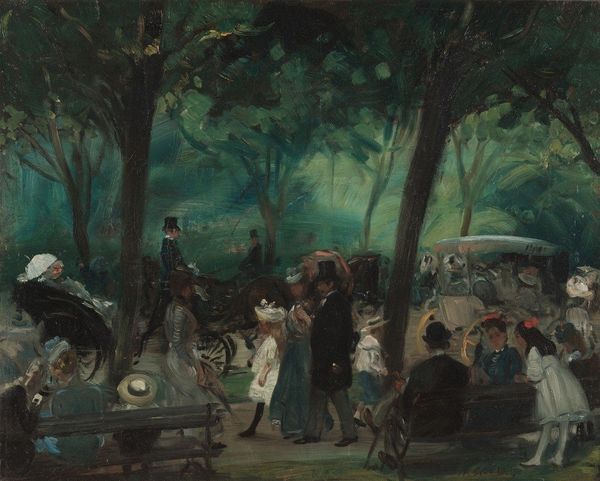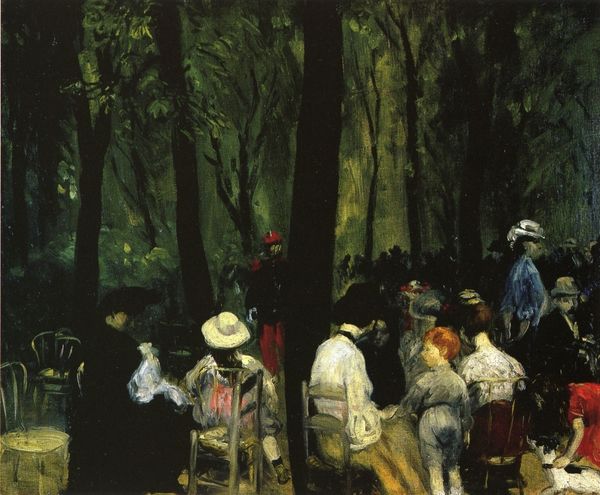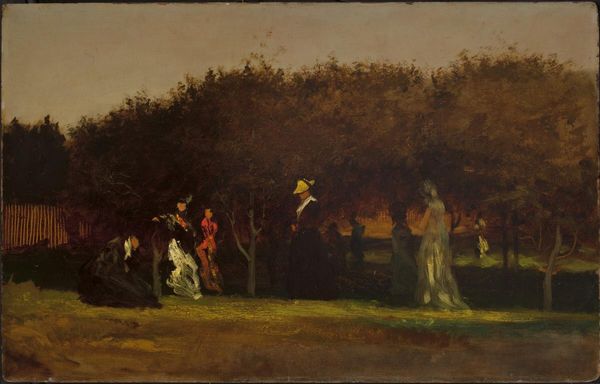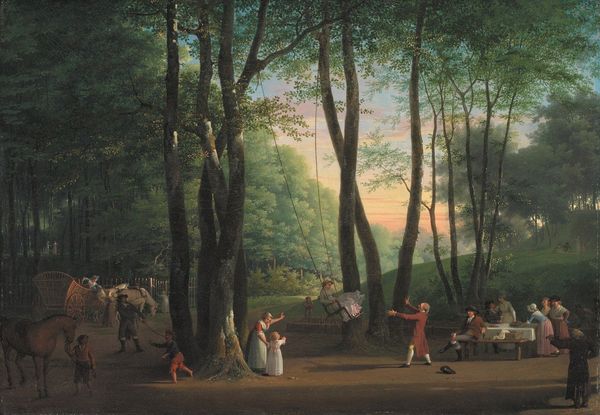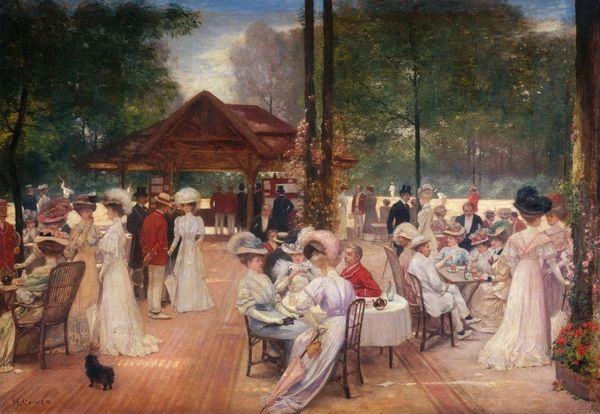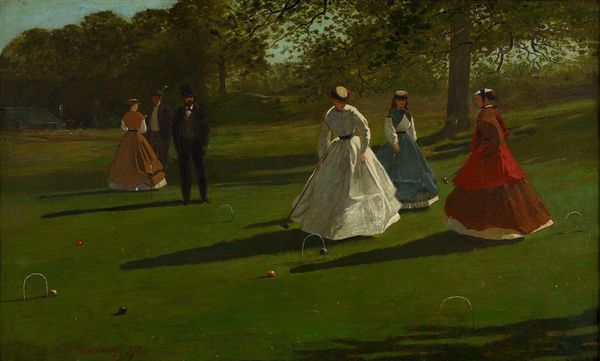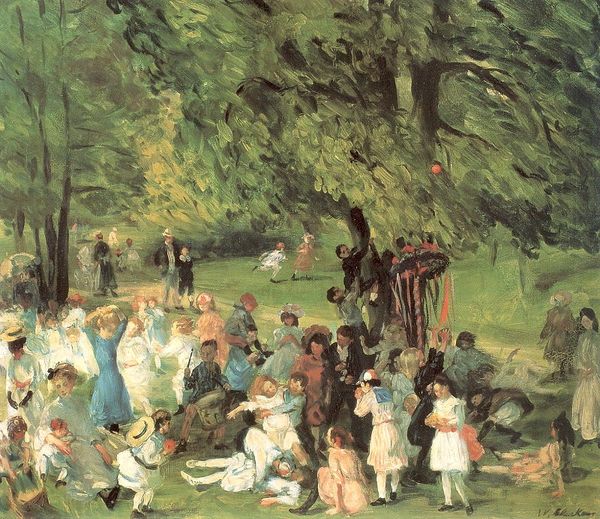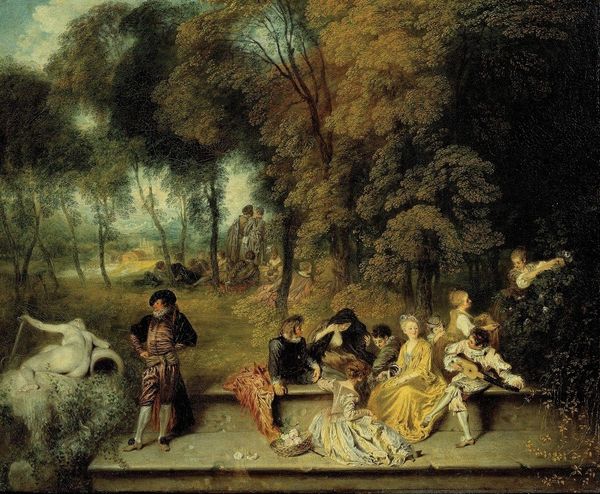
Copyright: Public Domain: Artvee
Curator: What strikes me first about William Glackens's "Luxembourg Gardens," painted in 1906, is the sense of layered space created by the arrangement of the trees. The figures are situated at this beautiful convergence, as these tall trees act like compositional pillars. Editor: The composition really guides the eye. I immediately sensed the hushed, contemplative air of a leisure park on a serene day; there’s almost a snapshot quality, freezing a specific moment. Curator: Absolutely. Glackens masterfully captures an ephemeral feeling, a sense of movement. Consider the visible brushstrokes—the texture almost dissolves at a distance, emphasizing the immediacy of the moment as if captured in one sitting en plein-air. It shows Glackens's roots in Impressionism, even as he started shifting toward a more realist mode, wouldn't you agree? Editor: Very well said. Contextually, it's interesting how Glackens's Ashcan School colleagues focused on the urban grit, while he consistently gravitated towards scenes of bourgeois leisure. "Luxembourg Gardens," specifically, illustrates the kind of polished, almost escapist vision that sharply contrasted with much of the Social Realism of that era. It speaks to Glackens’s place in portraying the rapidly changing landscape of urban society and its different classes, highlighting this unique public space. Curator: That's an incisive point, particularly when examining the artist's deployment of value to organize our perception; note the interplay between light and shadow that helps to articulate different elements, even individualizing members of the depicted crowd, to direct your attention towards specific sections of the composition. The figures in shadow, the figures brightly illuminated. The arrangement emphasizes contrasts, but keeps a consistent mood of the moment through this tonal balancing act. Editor: Indeed. And thinking about its display, the fact that museums embrace pieces like this indicates a shift toward including more 'slice-of-life' genre scenes into canonical narratives about our understanding of that era and the development of modernism itself. It really underscores art's enduring role in recording cultural rituals. Curator: Thank you, that puts Glackens and this piece in the picture more clearly. Editor: And now it has for us too.
Comments
No comments
Be the first to comment and join the conversation on the ultimate creative platform.
